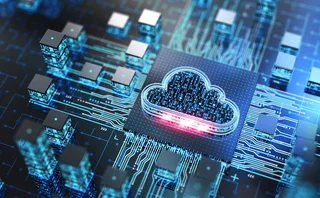Rob Daly: Happy Birthday to the Computing Tablet

When the Apple iPad first came out, I admit I was underwhelmed. It had the same functionality of the iPhone, but with a larger form factor. My immediate thought was that Apple recreated its Apple Newton MessagePad, one of the original personal digital assistants (PDAs) from the late 1980s.
However, unlike the Newton, the iPad has caught on as a media-delivery device. You cannot sit in any airport lounge, commuter train or bus without seeing someone plugged into an iPad trying to make their trip shorter by listening to music, watching a video or playing a game of Angry Birds.
I have thought the iPad—and now the various Android operating system-based tablets—were flukes. They were just executives’ latest toy that IT will be forced to support. But the more I think about it, I can’t help but feel that tablet devices will have a similar impact that Research in Motion’s BlackBerry handheld had on the industry.
Apples with Apples
But comparing these devices to the original tablet PCs that have been around for more than a decade would be wrong. Those devices are full-blown PCs that provide users another way to enter data besides the keyboard. For the most part they are designed for the individual who literally is on the run, which goes some way to explaining why they seem to have only found homes in the healthcare or warehouse industries.
The new tablets have a two-fold nature: Either they run small applications (apps) locally, or they provide a front-end for server-based applications delivered remotely.
Call them what you want—apps, widgets or something else—these small applications are starting to change how services are delivered. At one time they would have been features in much larger applications, but now they are standalone instances providing users with basic functionality that they need. Most users do not need all the capabilities of a full suite of software.
For the most part, a typical user only utilizes a small subset of features in any application. Take Microsoft Word and Excel as an example. How many people know the true capabilities of these applications? The subset of the most commonly used features would make decent apps themselves.
When users need more resource-intensive applications, the new generation of tablets provide the front-end, while the heavy lifting is done on a server farm or cloud. With the introduction of version 5 of the HTML standard, applications can finally deliver real-time streaming data via HTML. This means that most front ends now can be deployed as web-based applications, which simplifies their development.
Overdrive
Over the past 12 months since the iPad’s introduction, investment bank developers and independent software vendors (ISVs) have gone into overdrive porting and creating new applications for the various available tablet platforms. These devices have gone from being the latest platforms for delivering sales presentations to being able to provide real-time profit-and-loss and position information to their users. In the future the sky is the limit.
On a more practical side, the devices are much easier to manage than a notebook computer and cheaper to replace. From a security perspective they can be locked down just like a BlackBerry. From an end-user perspective, most people prefer carrying around a one-pound tablet than a three-pound notebook, plus the case and all of the necessary paraphernalia.
The introduction of tablets is a major change in the computing paradigm. It has finally weaned users off of associating applications and computing strictly with full-blown computers. Going forward, as the technology develops, the industry is going to see the computing form factors evolve and applications delivered simply as features in a variety of smart devices.
Only users who have a paid subscription or are part of a corporate subscription are able to print or copy content.
To access these options, along with all other subscription benefits, please contact info@waterstechnology.com or view our subscription options here: http://subscriptions.waterstechnology.com/subscribe
You are currently unable to print this content. Please contact info@waterstechnology.com to find out more.
You are currently unable to copy this content. Please contact info@waterstechnology.com to find out more.
Copyright Infopro Digital Limited. All rights reserved.
As outlined in our terms and conditions, https://www.infopro-digital.com/terms-and-conditions/subscriptions/ (point 2.4), printing is limited to a single copy.
If you would like to purchase additional rights please email info@waterstechnology.com
Copyright Infopro Digital Limited. All rights reserved.
You may share this content using our article tools. As outlined in our terms and conditions, https://www.infopro-digital.com/terms-and-conditions/subscriptions/ (clause 2.4), an Authorised User may only make one copy of the materials for their own personal use. You must also comply with the restrictions in clause 2.5.
If you would like to purchase additional rights please email info@waterstechnology.com
More on Emerging Technologies
Tape bids, algorithmic trading, tariffs fallout and more
The Waters Cooler: Bloomberg integrates events data, SimCorp and TSImagine help out asset managers, and Big xyt makes good on its consolidated tape bid in this week’s news roundup.
DeepSeek success spurs banks to consider do-it-yourself AI
Chinese LLM resets price tag for in-house systems—and could also nudge banks towards open-source models.
Standard Chartered goes from spectator to player in digital asset game
The bank’s digital assets custody offering is underpinned by an open API and modular infrastructure, allowing it to potentially add a secondary back-end system provider.
Saugata Saha pilots S&P’s way through data interoperability, AI
Saha, who was named president of S&P Global Market Intelligence last year, details how the company is looking at enterprise data and the success of its early investments in AI.
Data partnerships, outsourced trading, developer wins, Studio Ghibli, and more
The Waters Cooler: CME and Google Cloud reach second base, Visible Alpha settles in at S&P, and another overnight trading venue is approved in this week’s news round-up.
Are we really moving on from GenAI already?
Waters Wrap: Agentic AI is becoming an increasingly hot topic, but Anthony says that shouldn’t come at the expense of generative AI.
Cloud infrastructure’s role in agentic AI
The financial services industry’s AI-driven future will require even greater reliance on cloud. A well-architected framework is key, write IBM’s Gautam Kumar and Raja Basu.
Waters Wavelength Ep. 310: SigTech’s Bin Ren
This week, SigTech’s CEO Bin Ren joins Eliot to discuss GenAI’s progress since ChatGPT’s emergence in 2022, agentic AI, and challenges with regulating AI.







